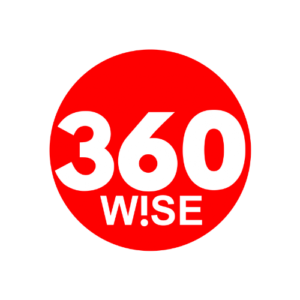Personal Brand Identity
In today’s digital world, personal brand identity has become more important than ever. With the increasing competition in every industry, establishing a strong personal brand identity is necessary to stand out from the crowd. A personal brand identity refers to the way you present yourself to the world. It’s what makes you unique and sets you apart from others. A strong personal brand identity can help you create a lasting impression, establish credibility, increase visibility, and attract more opportunities.
Why Personal Brand Identity is Important
One of the primary reasons why personal brand identity is important is that it helps you establish credibility. A strong personal brand identity can help you gain the trust of your target audience, which can lead to more business opportunities. Your personal brand identity showcases your skills, experience, and expertise, which can help you stand out from your competitors.
Another reason why personal brand identity is important is that it can help you increase your visibility. In today’s digital age, having a strong online presence is crucial. By creating a personal brand identity, you can build a strong online presence that showcases your skills and expertise. This can help you attract more business opportunities and increase your chances of success.
Understanding Your Personal Brand
Before you can start building your personal brand identity, it’s essential to understand what it is. Your personal brand identity is a combination of your values, beliefs, skills, expertise, and personality. It’s what makes you unique and sets you apart from others. You need to understand what makes you stand out from the crowd and what value you bring to your target audience.
To understand your personal brand, you need to conduct a self-assessment. Start by asking yourself the following questions:
- What are my core values and beliefs?
- What are my unique skills and expertise?
- What makes me different from others in my industry?
- What’s my personality like, and how does it impact my work?
- What do I want to be known for in my industry?
Once you have a clear understanding of your personal brand, you can start building your personal brand identity.

Building Your Personal Brand Identity
Building a strong personal brand identity takes time and effort. Here are the steps you can take to build your personal brand identity:
Creating a Personal Brand Statement
A personal brand statement is a brief statement that summarizes your unique value proposition. It’s a concise statement that explains what you do, who you do it for, and what makes you different. Your personal brand statement should be catchy, memorable, and easy to understand.
To create a personal brand statement, start by identifying your target audience. Who do you want to reach with your personal brand? Once you’ve identified your target audience, think about what makes you unique and what value you bring to them. Use this information to craft your personal brand statement.
Developing Your Personal Brand Assets
Your personal brand assets are the visual and written elements that represent your personal brand identity. These include your logo, website, business cards, social media profiles, and other marketing materials. It’s essential to develop consistent personal brand assets that represent your personal brand identity accurately.
When developing your personal brand assets, make sure they align with your personal brand statement and values. Use colors, fonts, and imagery that represent your personal brand accurately. Consistency is key when it comes to personal brand assets, so make sure they’re consistent across all platforms.
Personal Branding on Social Media
Social media is one of the most effective ways to build your personal brand identity. By creating a strong online presence, you can increase your visibility and attract more opportunities. When it comes to personal branding on social media, there are a few things to keep in mind:
- Choose the right platforms: Not all social media platforms are created equal. Choose the platforms that your target audience uses the most.
- Be consistent: Use the same profile picture, cover photo, bio, and messaging across all social media platforms.
- Engage with your audience: Respond to comments and messages, and engage with your audience regularly.
- Share valuable content: Share content that adds value to your target audience and showcases your expertise.
Personal Branding through Content Creation
Content creation is another effective way to build your brand identity. By creating valuable content, you can establish yourself as an expert in your industry and attract more business opportunities. Here are a few tips for personal branding through content creation:
- Choose the right format: Choose the format that works best for your target audience, such as blog posts, videos, podcasts, or social media posts.
- Share your expertise: Create content that showcases your skills and expertise.
- Be consistent: Consistency is key when it comes to content creation. Create a content schedule and stick to it.
- Share your content: Share your content on social media platforms and other relevant channels to increase visibility.
Personal Branding through Networking
Networking is another essential aspect of personal branding. By networking with others in your industry, you can build relationships, establish credibility, and attract more business opportunities. When it comes to personal branding through networking, here are a few tips:
- Attend industry events: Attend conferences, seminars, and other industry events to meet new people and build relationships.
- Join industry groups: Join industry groups and associations to connect with others in your industry.
- Be helpful: Offer to help others and provide value whenever possible.
- Follow up: Follow up with people you meet and maintain relationships over time.
Measuring the Success of Your Brand
Measuring the success of your brand is essential to determine whether your efforts are paying off. Here are a few metrics you can use to measure the success of your brand:
- Social media engagement: Measure the engagement rate of your social media posts.
- Website traffic: Monitor your website traffic and track where your visitors come from.
- Business opportunities: Keep track of the business opportunities you receive as a result of your brand identity.
- Industry recognition: Track any awards, accolades, or recognition you receive in your industry.Common Mistakes to Avoid in Personal Branding
When it comes to personal branding, there are a few common mistakes to avoid
- Being inauthentic: Your personal brand identity should be authentic and reflect who you are.
- Focusing on quantity over quality: Quality is more important than quantity when it comes to personal branding.
- Being inconsistent: Consistency is key when it comes to personal branding. Make sure your brand assets and messaging are consistent across all platforms.
- Neglecting your brand: Building a personal brand takes time and effort. Neglecting it can lead to a loss of credibility and visibility.
Personal Brand Identity Examples
Here are a few examples of successful personal brand identities:
- Oprah Winfrey: Oprah’s brand identity is focused on empowerment, inspiration, and positivity. She has built a successful media empire that reflects her personal brand identity.
- Gary Vaynerchuk: Gary’s personal brand identity is focused on entrepreneurship, social media, and marketing. He has built a successful personal brand through his content creation and speaking engagements.
- Elon Musk: Elon’s personal brand identity is focused on innovation, technology, and sustainability. He has built a successful personal brand through his work with Tesla and SpaceX.
- Attorney Ben Crump: Ben Crump’s personal brand identity is focused on human rights, civil rights and fighting for the marginalized in the USA.
Conclusion
In conclusion, personal brand identity is essential in today’s digital world. It’s what sets you apart from the competition and helps you establish credibility, increase visibility, and attract more opportunities. By understanding your personal brand, building your personal brand assets, and leveraging social media, content creation, and networking, you can create a strong and authentic personal brand identity that resonates with your target audience. Remember a logo is just an identifier but all in all… YOU ARE THE BRAND.




